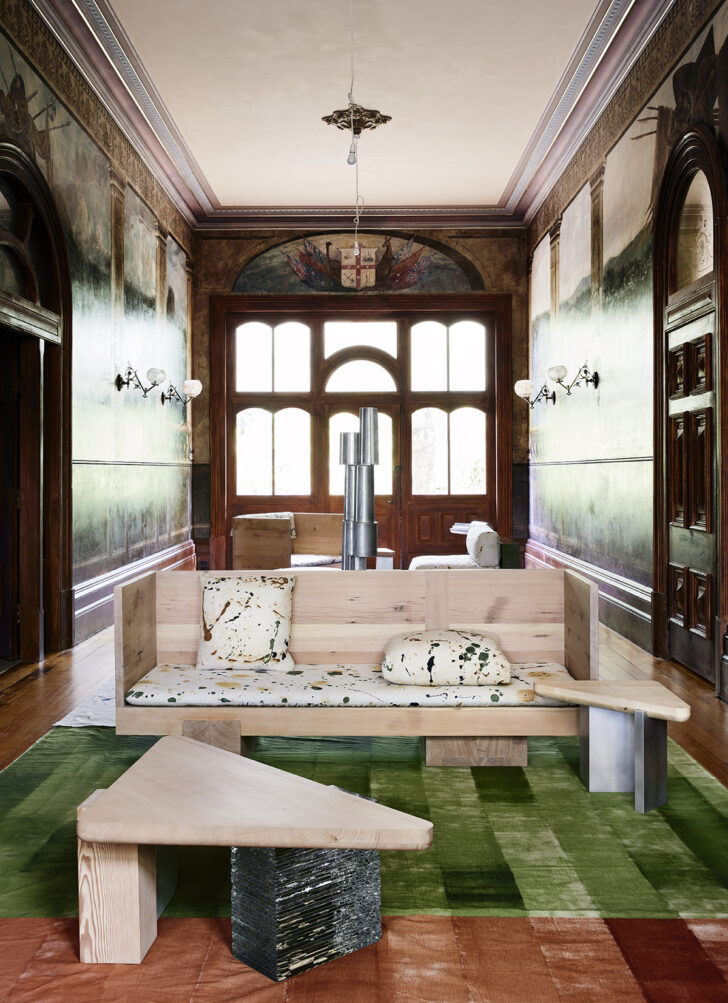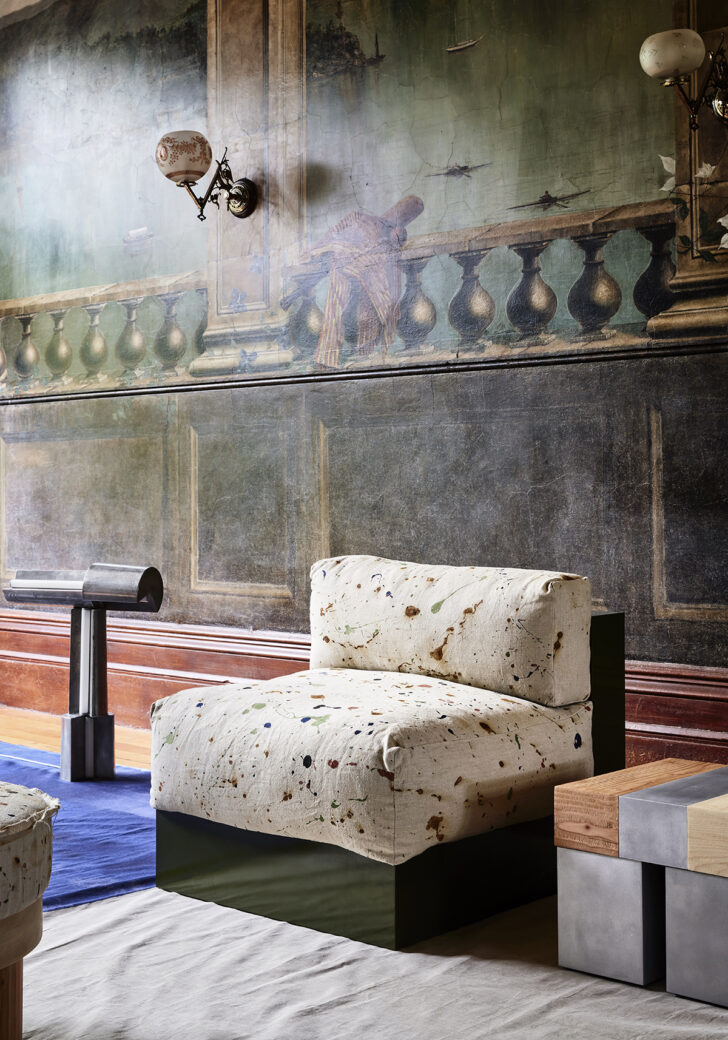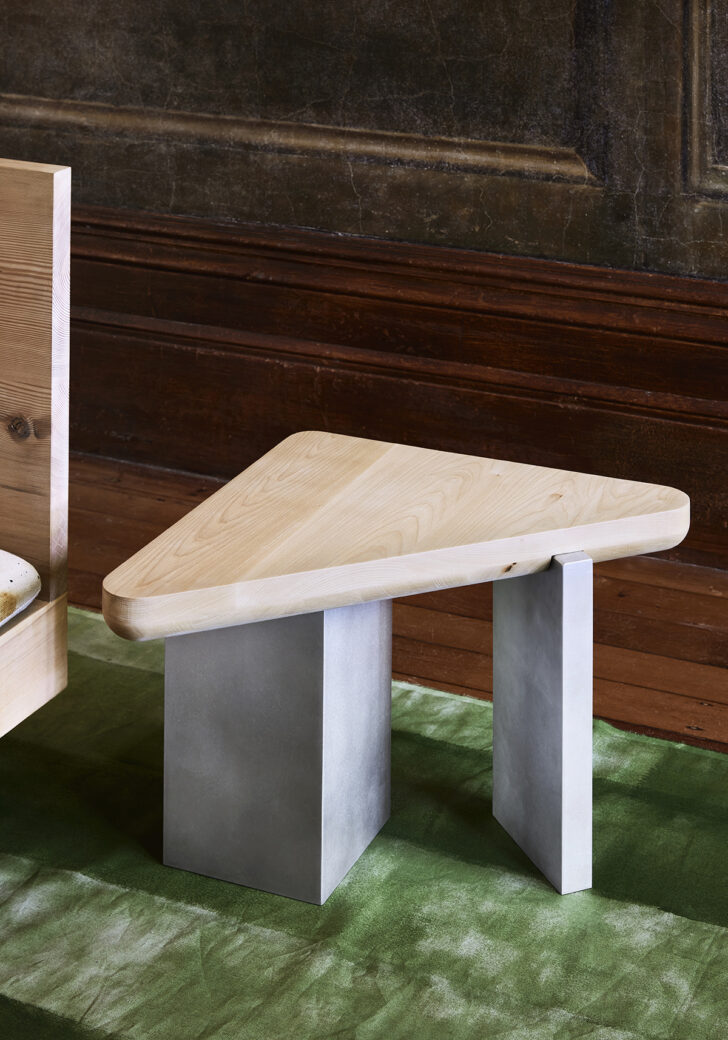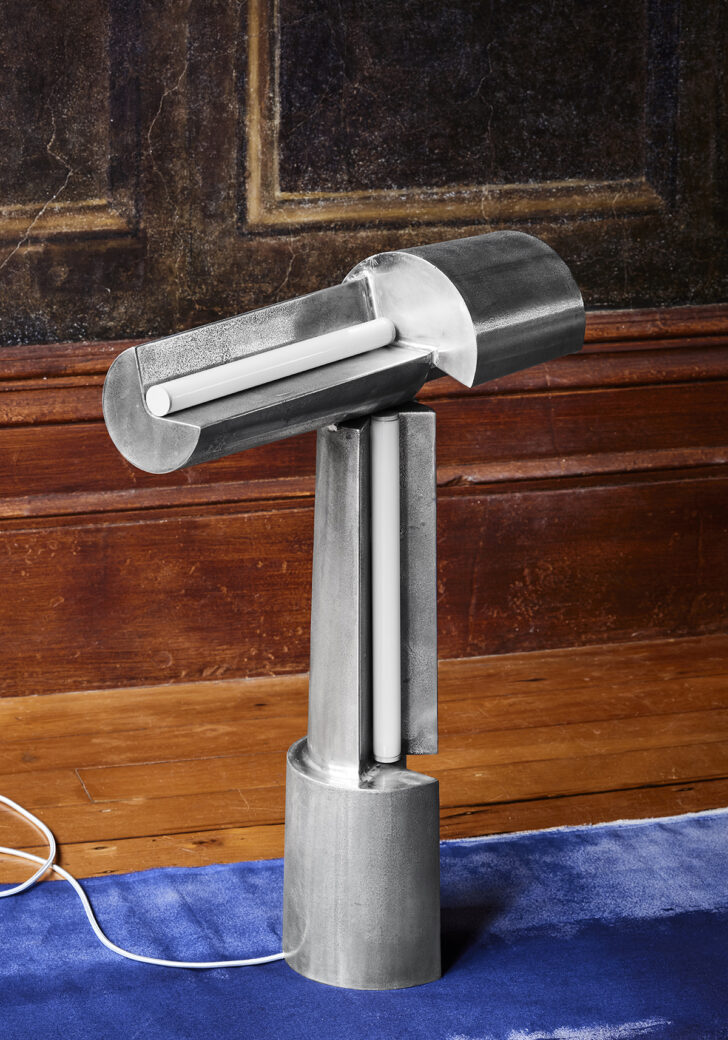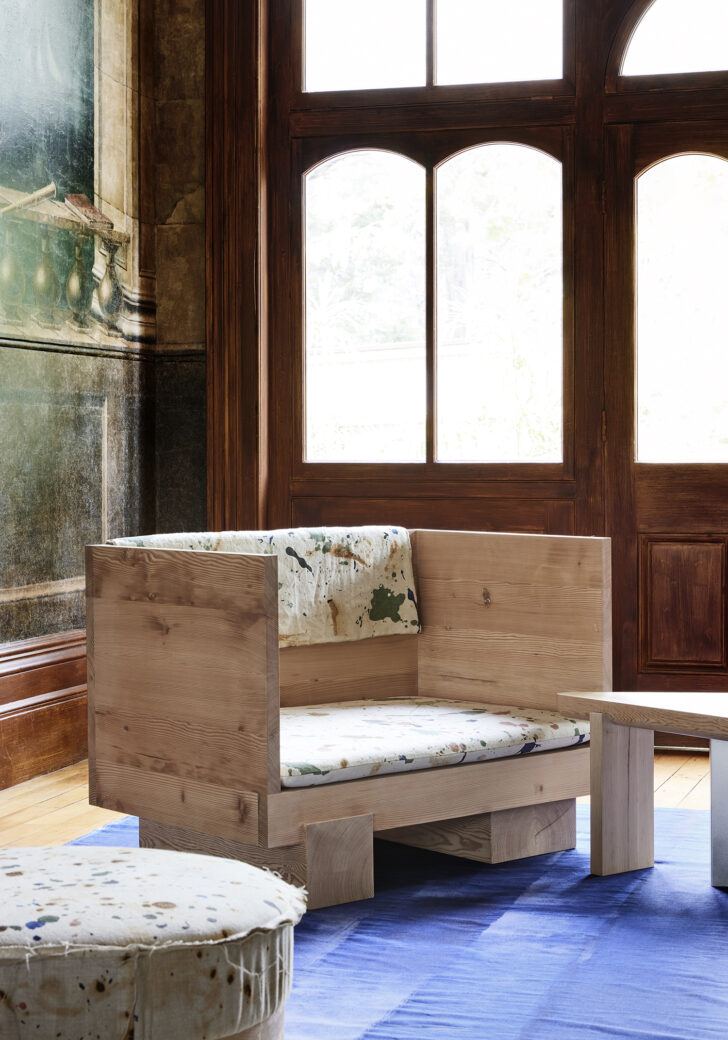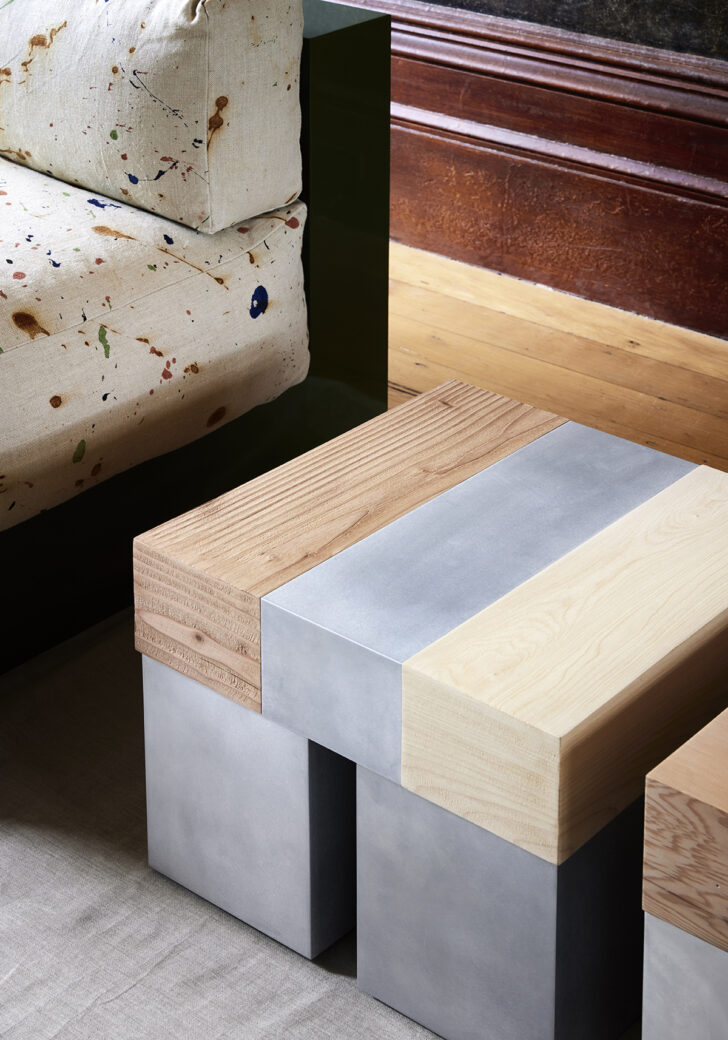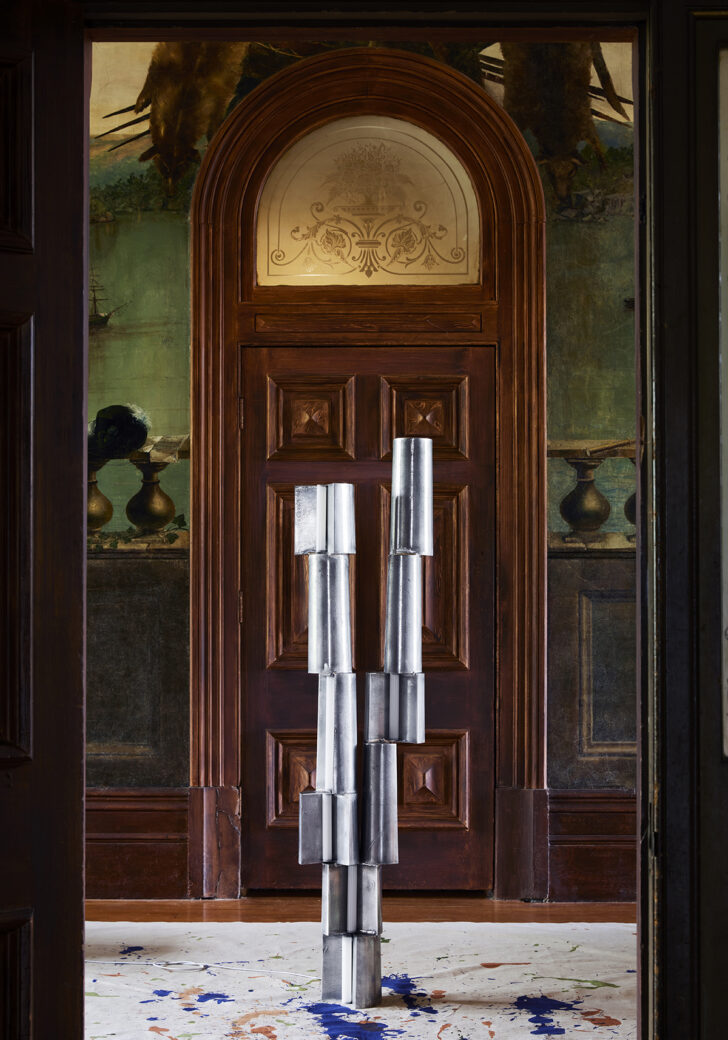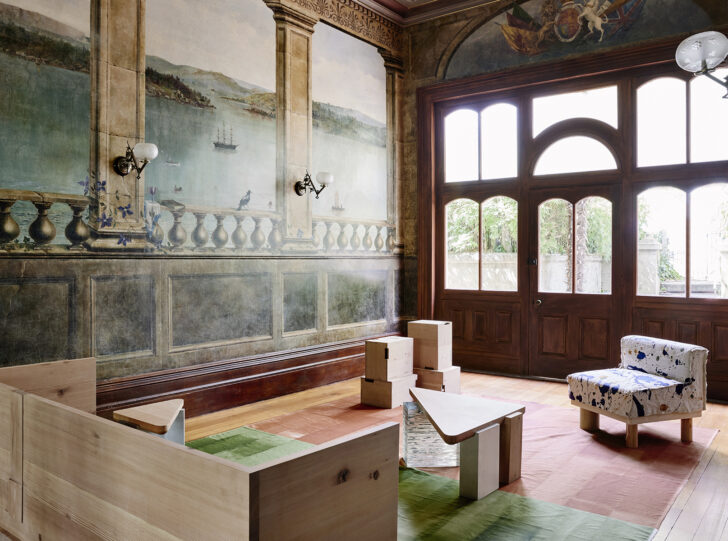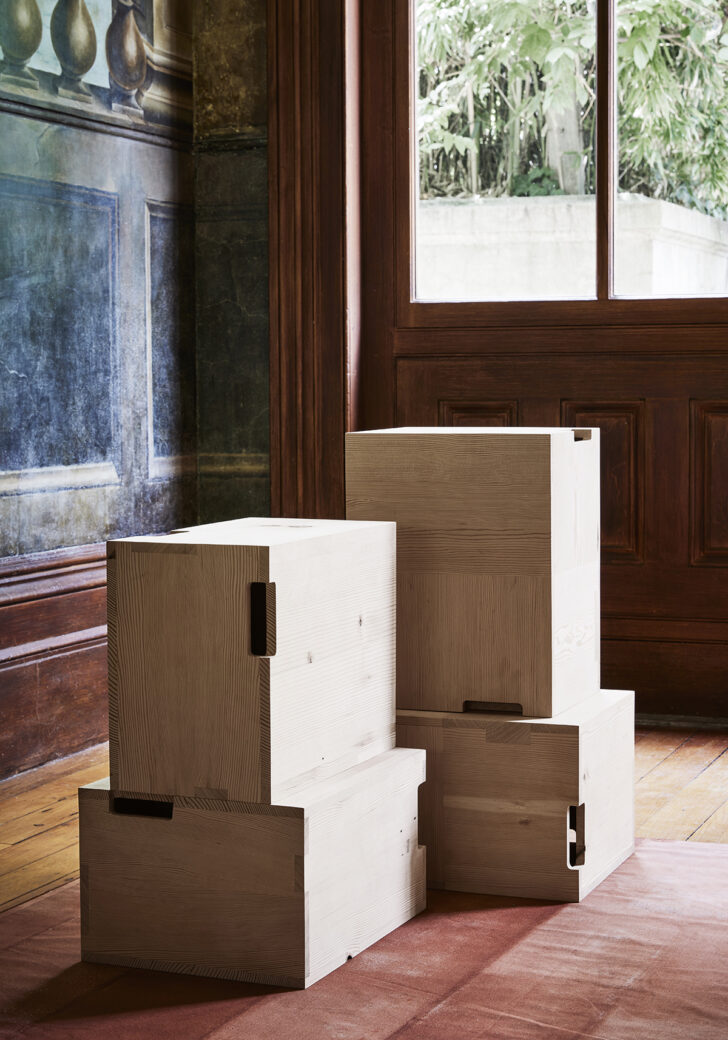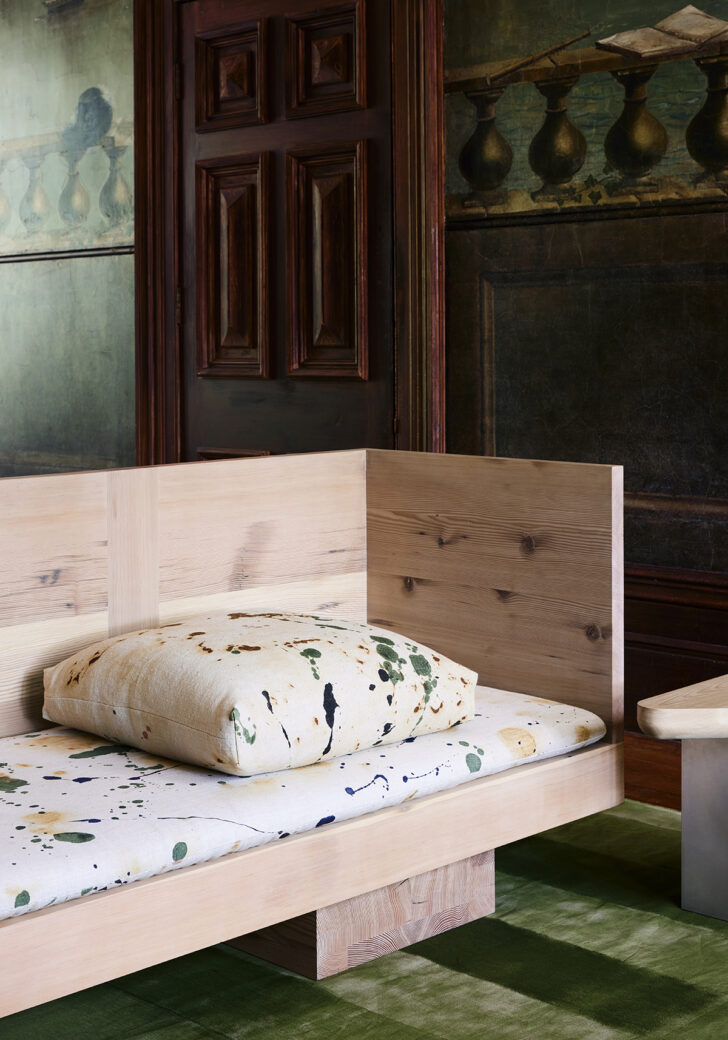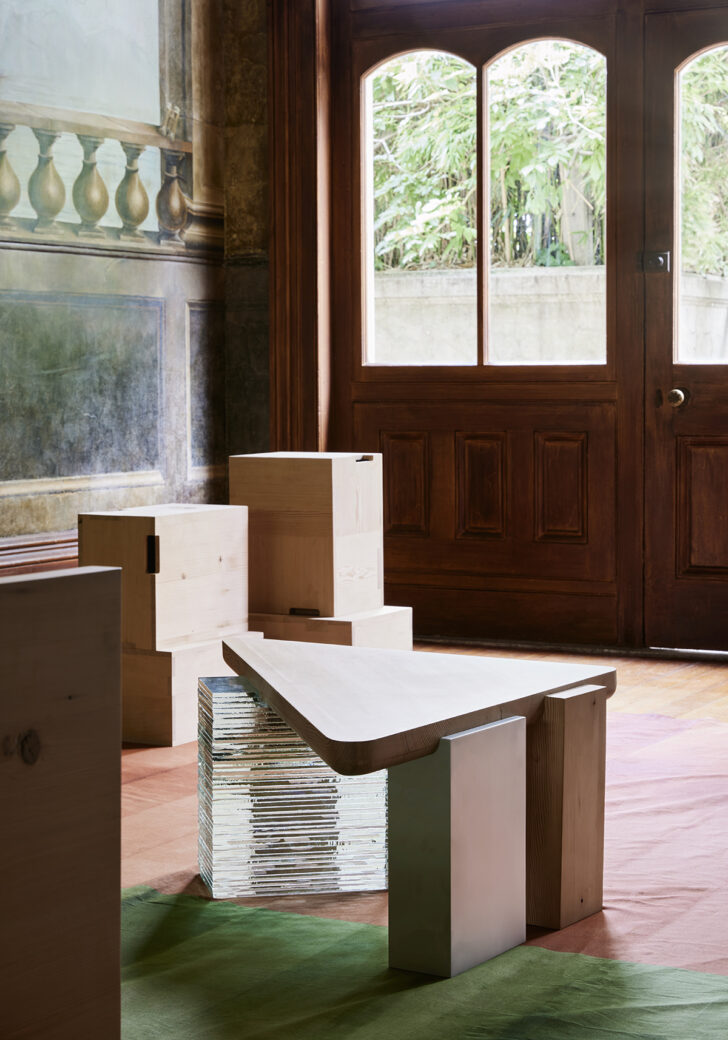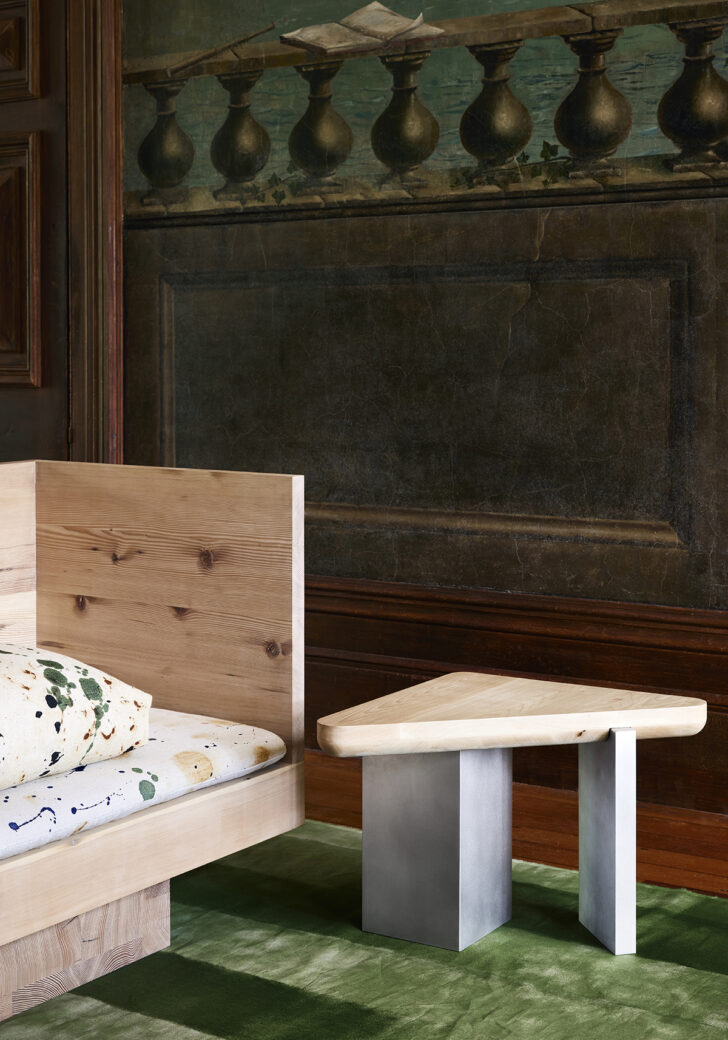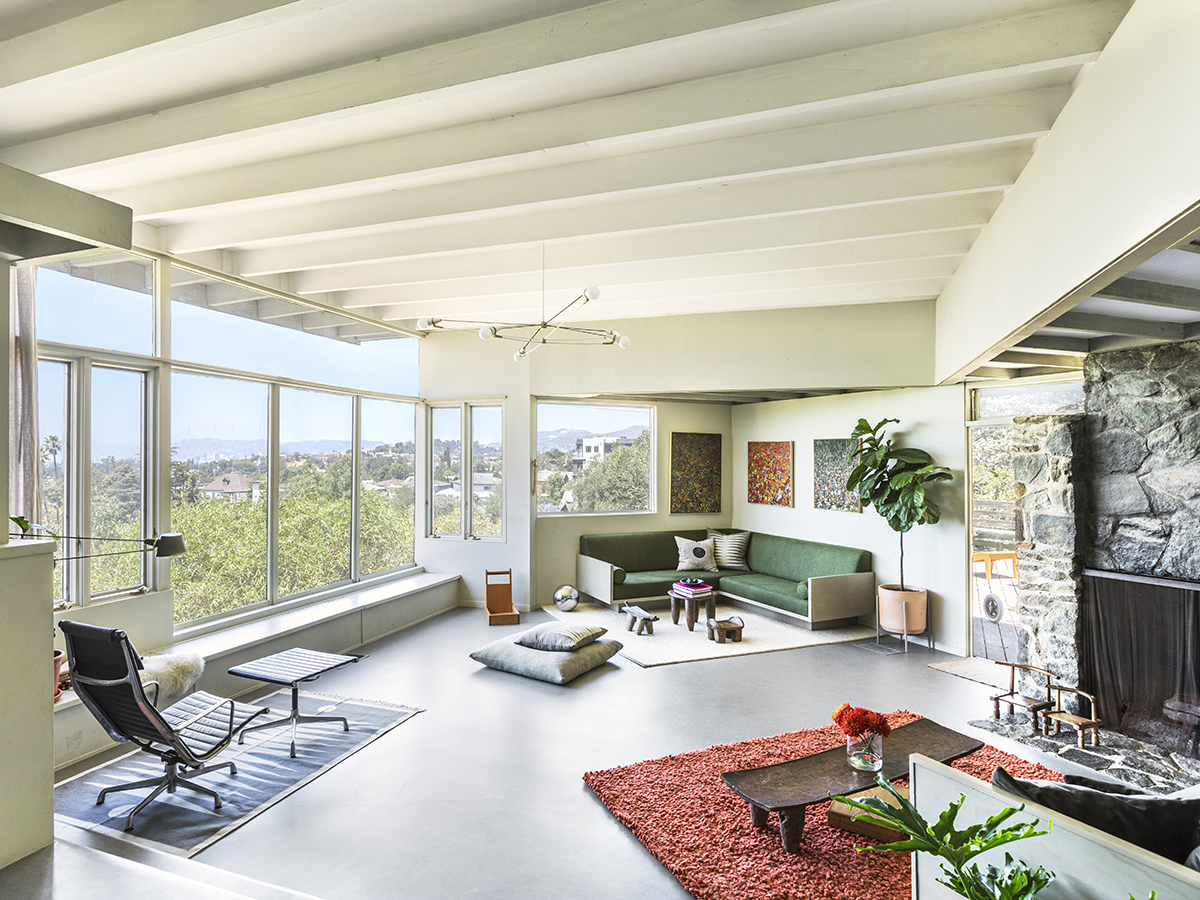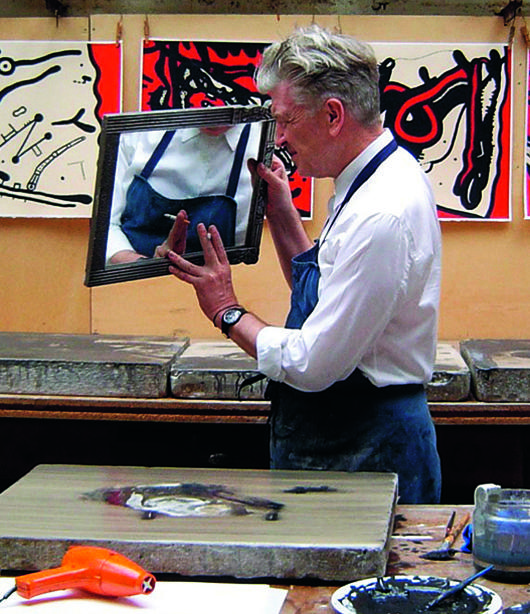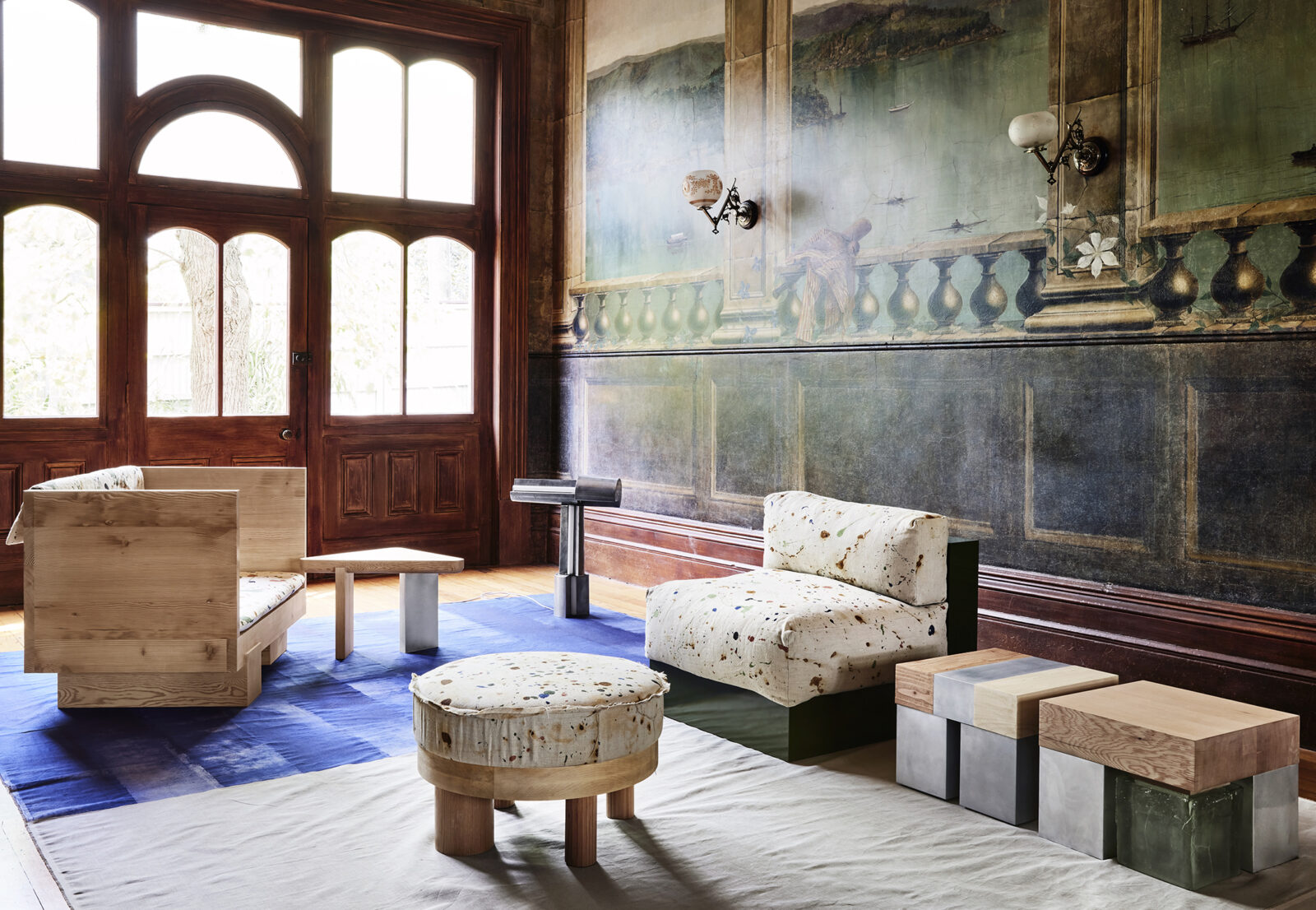
04.13.22
Sighted
Fiona Lynch’s New Furniture Collection References Everything from Rudolf Schindler to the Ace Hotel Aesthetic
The first capsule collection of furniture from Melbourne-based interior designer Fiona Lynch is an object lesson in balance. There’s an asymmetry that paradoxically works to harmonize the side tables, stools, armchairs, daybed, and lamps here for a look that’s cohesive and inviting while slightly off-kilter. Take the daybed, which echoes Donald Judd’s iconic model but is made more playful with two mismatched, squat wooden slabs that function as legs. The materials – textiles, metal, wood, and glass – mingle just as the pared-back pieces themselves are meant to be mixed, matched, and arranged in various geometric configurations, like they were when juxtaposed against the Victorian setting of the Villa Alba Museum during Melbourne Design Week (when the collection was launched last month).
The furniture was spun out of Lynch’s design for the restaurant and rooftop at the new Ace Hotel Sydney, which opens later next month. (Flack Studio is responsible for the rest of the hotel’s interior design.) As part of her research for the hotel’s entertaining spaces, Lynch traveled to Ace locations in New York City and Los Angeles as a kind of “study tour” of American design. In LA, she went to the Schindler House, designed by architect Rudolf Schindler, and was taken with the “honesty of materials and shifting materiality from polished copper to the redwood timber framing.” She also went to see Frank Lloyd Wright’s Hollyhock House, which Schindler project-managed when he worked for Wright at the start of his career. The Arts & Crafts interior of the Hollyhock, and the influence of Japanese design on both Wright and Schindler served as inspiration for Lynch, as did a visit to the Isamu Noguchi Foundation and Garden Museum in New York.
“It was a life-changing experience to learn and be present with so much of Noguchi’s work and ethos in person, all in one space, so particularly orchestrated,” says Lynch. “So, when starting our Ace project, I wanted to keep these experiences in mind as a way to link American design and the Ace Sydney. For the interiors, we have mainly used Australian timbers and stones, apart from a little maple and Oregon timber. The language for the interior draws on my experiences at the Noguchi Museum and at Schindler House, as the furniture and joinery have a minimal, Japanese aesthetic, and we have worked with the stone in a solid manner and played with different finishes, which Noguchi’s work often reflects.”
A minimalist sensibility not only guides Lynch’s aesthetic but her studio’s ecological footprint. Her commitment to sustainable materials extends beyond the lip service often paid to environmental responsibility. The pieces here are made from reclaimed timber, hand-worked aluminum, and slumped glass from offcuts. And for the fabric, waste metals and brick from the Ace’s construction site were ground into pigments (with help from design studio Spacecraft) and then hand-splattered onto Belgian linen, to create a look that conjures painters’ drop cloths. Everything was fabricated locally in Melbourne, as well, by furniture maker Ross Thompson, glass artist Jacquie Hacansson, and lighting studio Volker Haug (who reworked their aluminum Tableton lamp).
Lynch, who founded her studio in 2013, sees this collection as only a beginning: “Our plan is to continue to develop our furniture using reclaimed timbers and materials in line with our studio’s strict sustainability ethos.” The capsule pieces are available by contacting the studio and Melbourne-area locals can make an appointment at Work Shop, the studio’s gallery space, to take a closer look.
